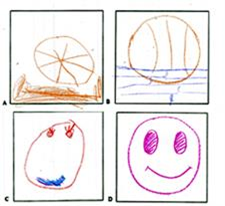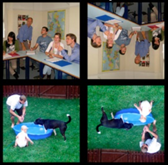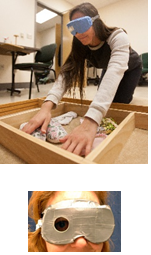SCENE REPRESENTATION & MEMORY
|
|
In this research we explore the factors that affect memory for scenes. We study memory for scene details, however, our main focus in on common errors and distortions of memory that can help reveal underlying processes. For example, boundary extension, a phenomenon discovered in our lab, indicates the role of scene construction in memory for views of the world – as the observer falsely (and confidently) remembers having seen beyond the physical bounds of the view. In other research we are exploring the plasticity of spatial memory in response to changes in the layout of objects. We are interested in the role of scene structure, emotional scene content, and changes in viewpoint on memory. In collaborative studies with other labs we have been exploring the neural underpinning of scene construction. Mental scene construction allows the observer to incorporate anticipated future views of the world that are not currently available. The anticipatory representation it supports may facilitate integration of views during visual scanning and navigation as the observer interacts with a surrounding world. Four related publications: Intraub & Gagnier (2018), Gagnier, Dickinson, & Intraub (2013), Mullally, Intraub, & Maguire (2012), Gagnier, Intraub, Oliva, & Wolfe (2011). |
VISUAL SCENE REPRESENTATION AND MEMORY
SPATIAL REPRESENTATION: VISION & HAPTICS
SCENE PERCEPTION AND MEMORY IN PRESCHOOL CHILDREN
 |
STEM learning draws heavily on spatial cognitive abilities. In our research with preschool children, we are studying scene perception, and scene representation in memory. How well do young children process information presented at a glance? And what visual details they can the recall moments later? We are interested in the problem of “dual representation” – a photo we hold in our hand is an object but also a representation of the world. Do young children process the image as an object or as a partial view of an expected surrounding world? We address this by studying the factors that affect boundary extension (false memory for the continuation of a view). We conduct this research at the University of Delaware’s Early Learning Center. In collaboration with my UD colleague, Dr. Paul Quinn, we have also tested whether infants too make this anticipatory error when they remember scenes. Four related publications: Intraub & Gagnier (2018), Kreindel & Intraub (2017), Spanò, Intraub & Edgin (2017), and Quinn & Intraub (2007). |






